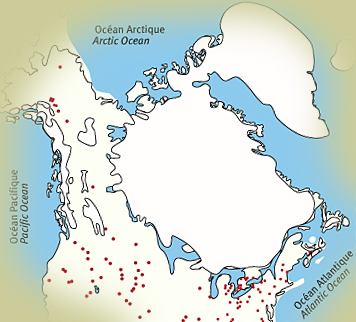|
First Peoples >
An Aboriginal Presence >
Our Origins >
Archaeology >
At the Edge of the Ice >
Late Glacial: 11,000 years ago
|
 |
An Aboriginal PresenceOur OriginsArchaeology - At the Edge of the IceLate Glacial: 11,000 years ago - As the glaciers melted, huge lakes formed at the edge of the ice, remnants of which include the modern Great Lakes, Lake Winnipeg, Great Slave Lake and Great Bear Lake. The earth's crust had been so deeply depressed by the weight of the ice that the ocean flooded into the interior of the continent, to form the now vanished Champlain Sea in the lower St. Lawrence and Ottawa valleys. Despite melting ice, sea levels remained low enough to keep the Bering Land Bridge exposed. As the ice melted, extensive corridors of unglaciated terrain were opened up in mid-continent and along the West Coast. People may have used these corridors as travel routes into North America to spread rapidly into the ice-free areas of the continent. 
Northern North America, Late Glacial, 11,000 years ago Full Glacial: 18,000 years ago Late Glacial: 11,000 years ago Early Postglacial: 8,000 years ago Middle Postglacial: 5,000 years ago Late Postglacial: 1,000 years ago |